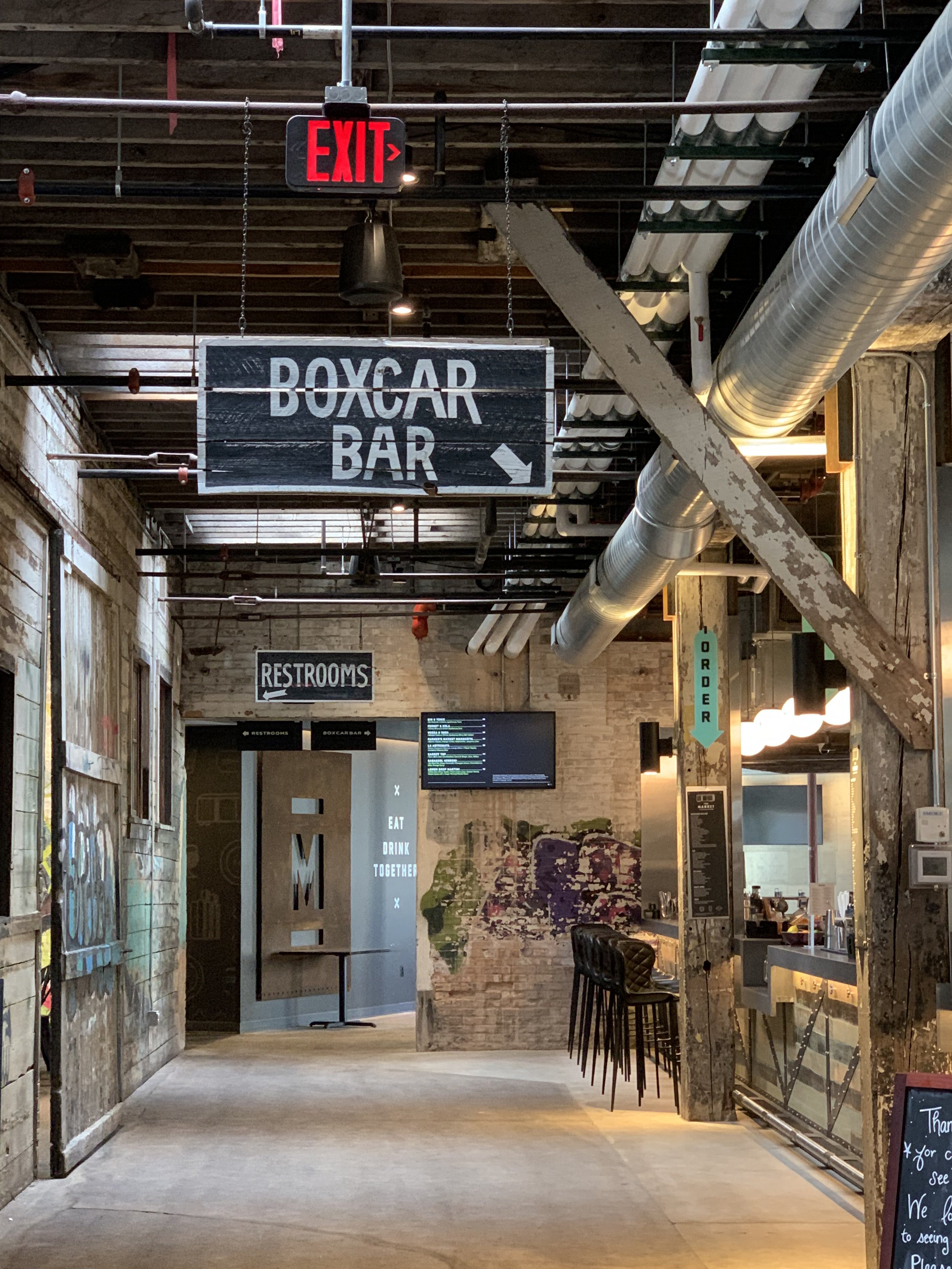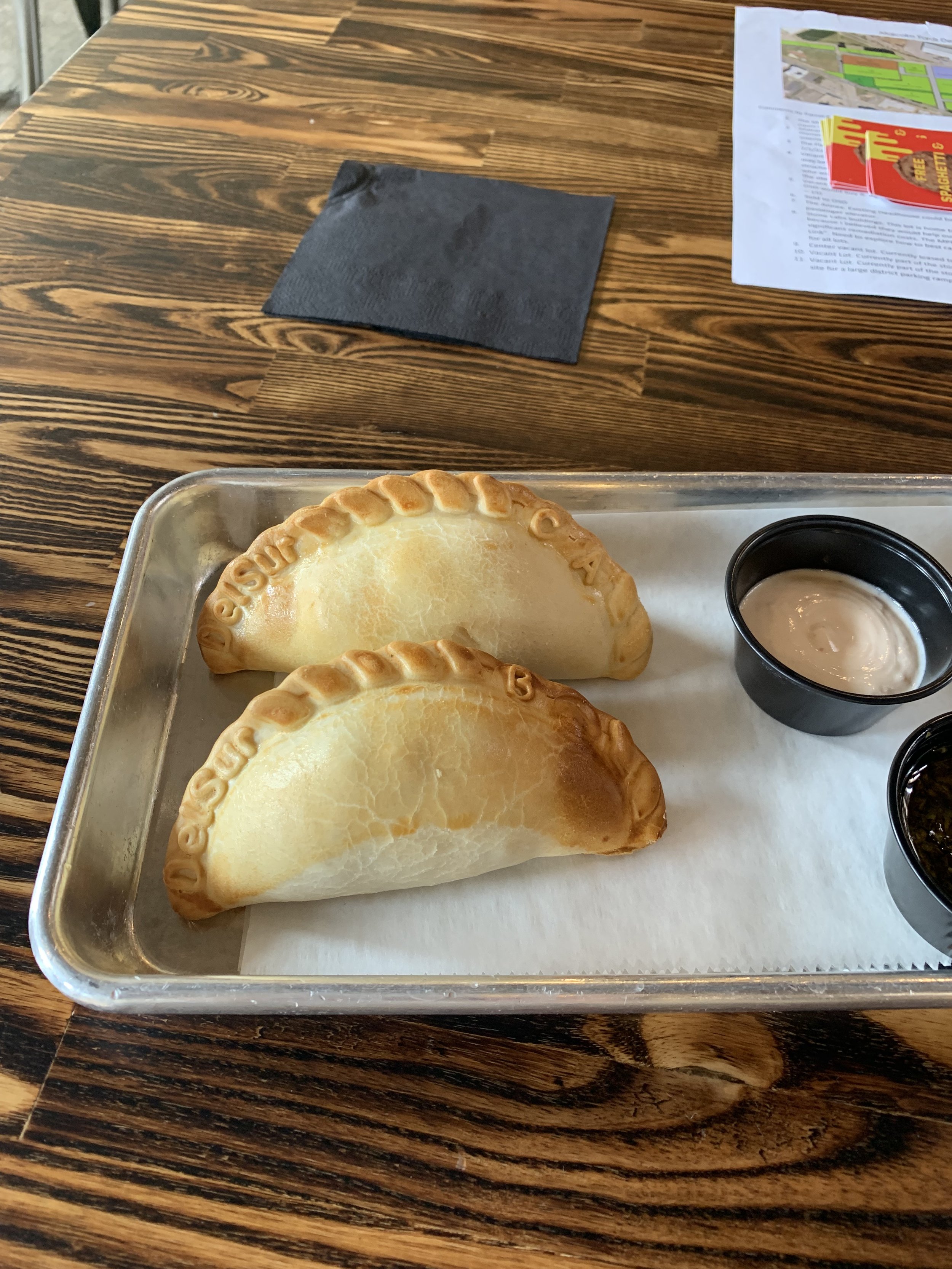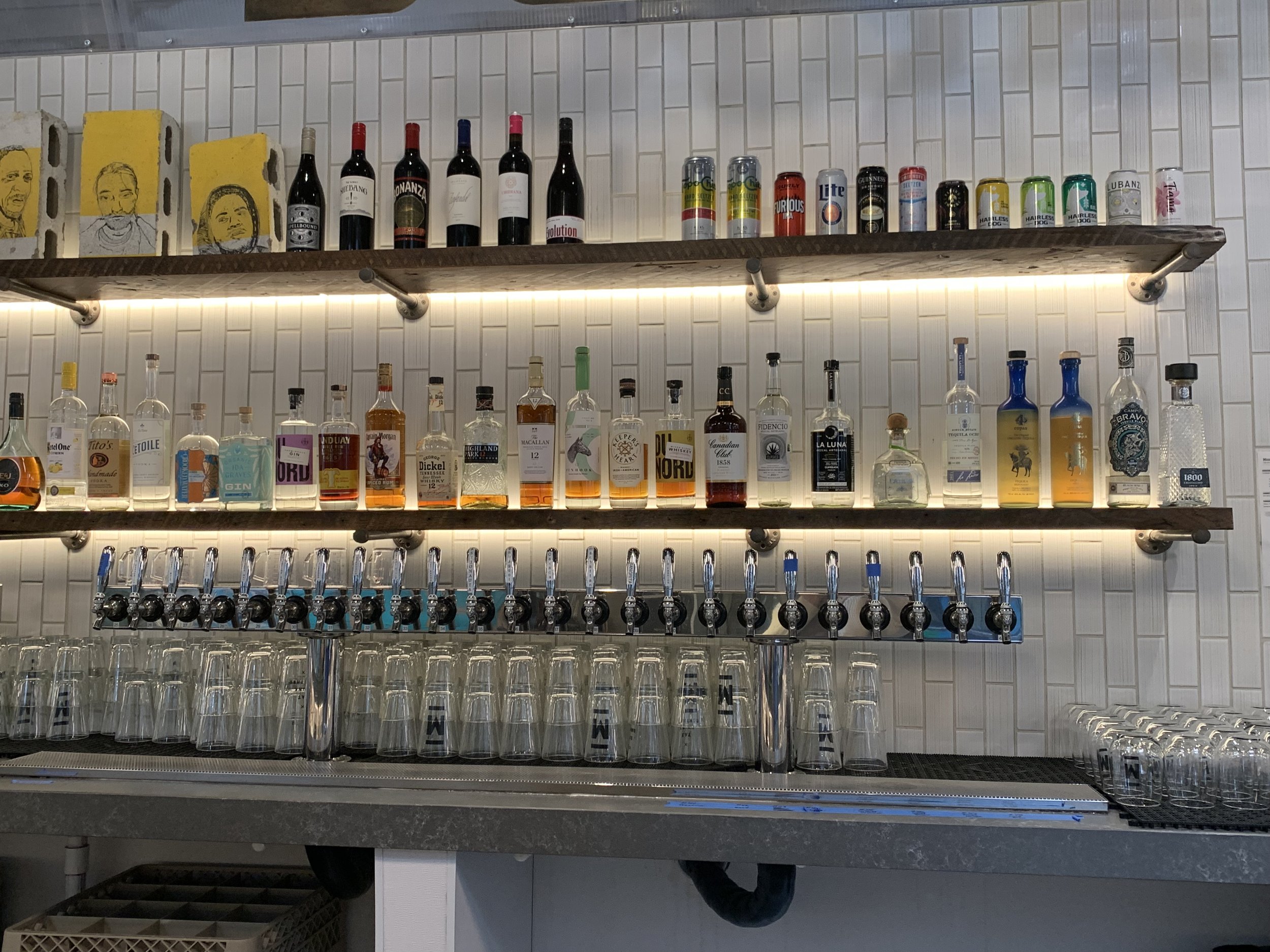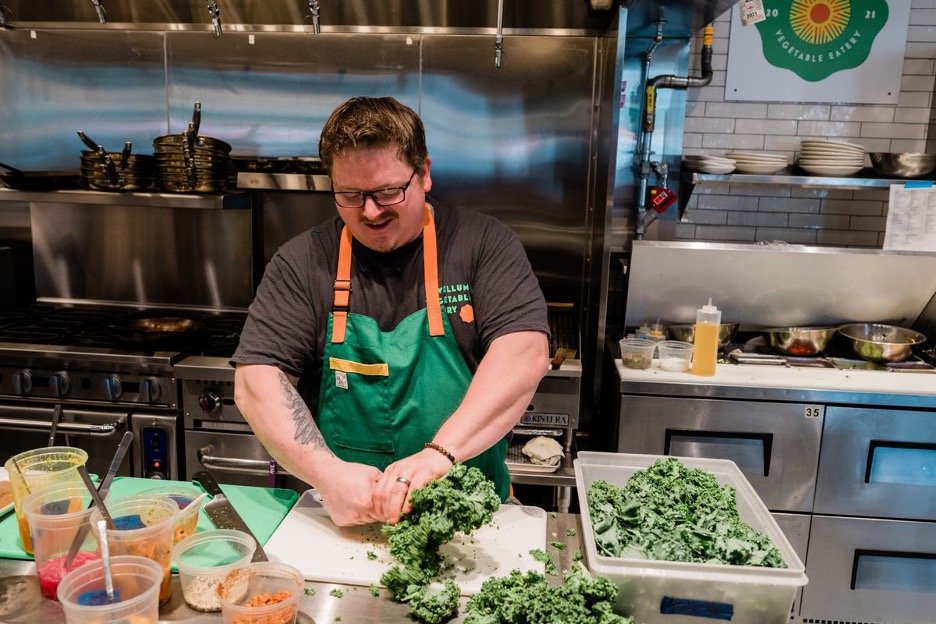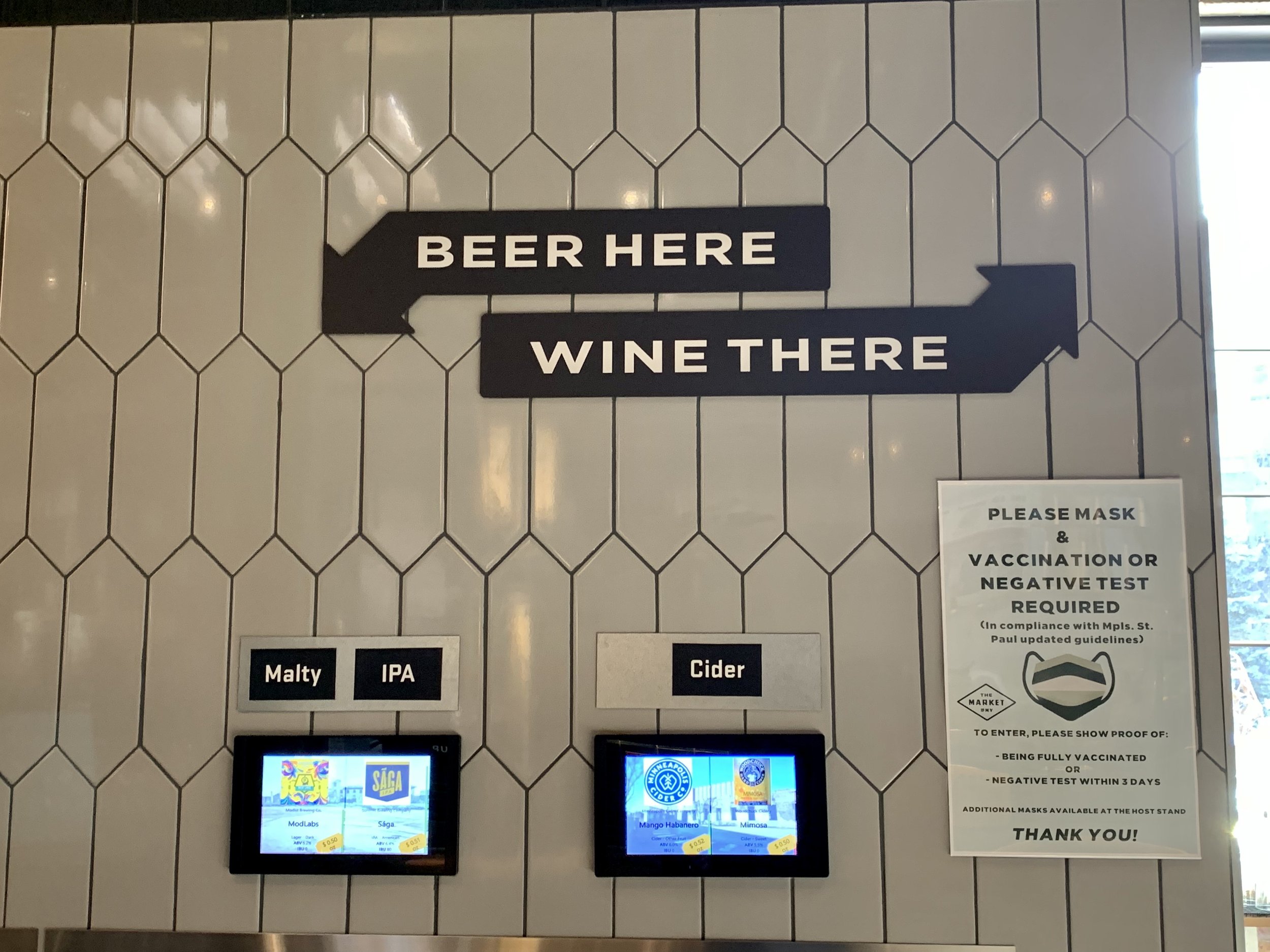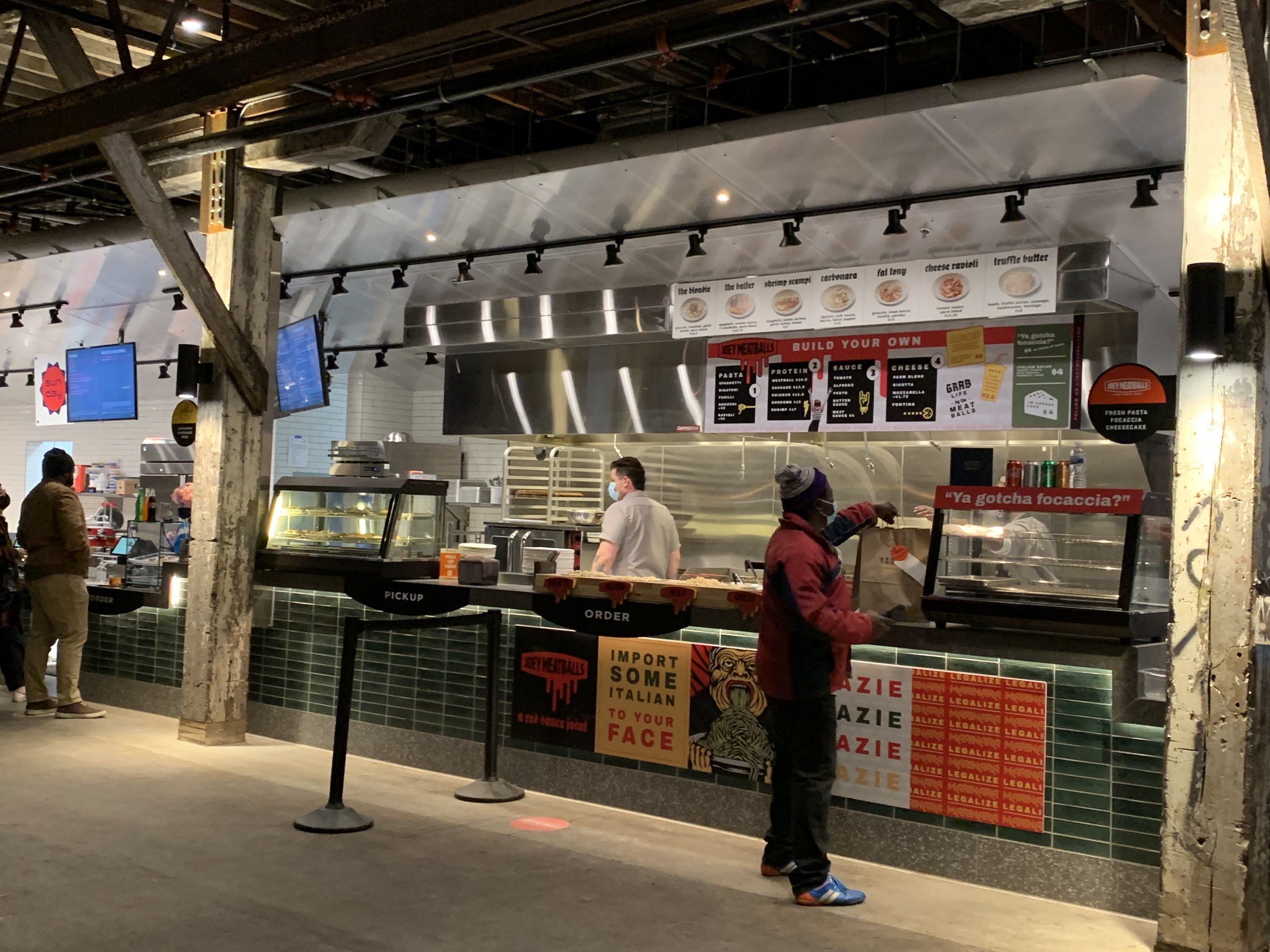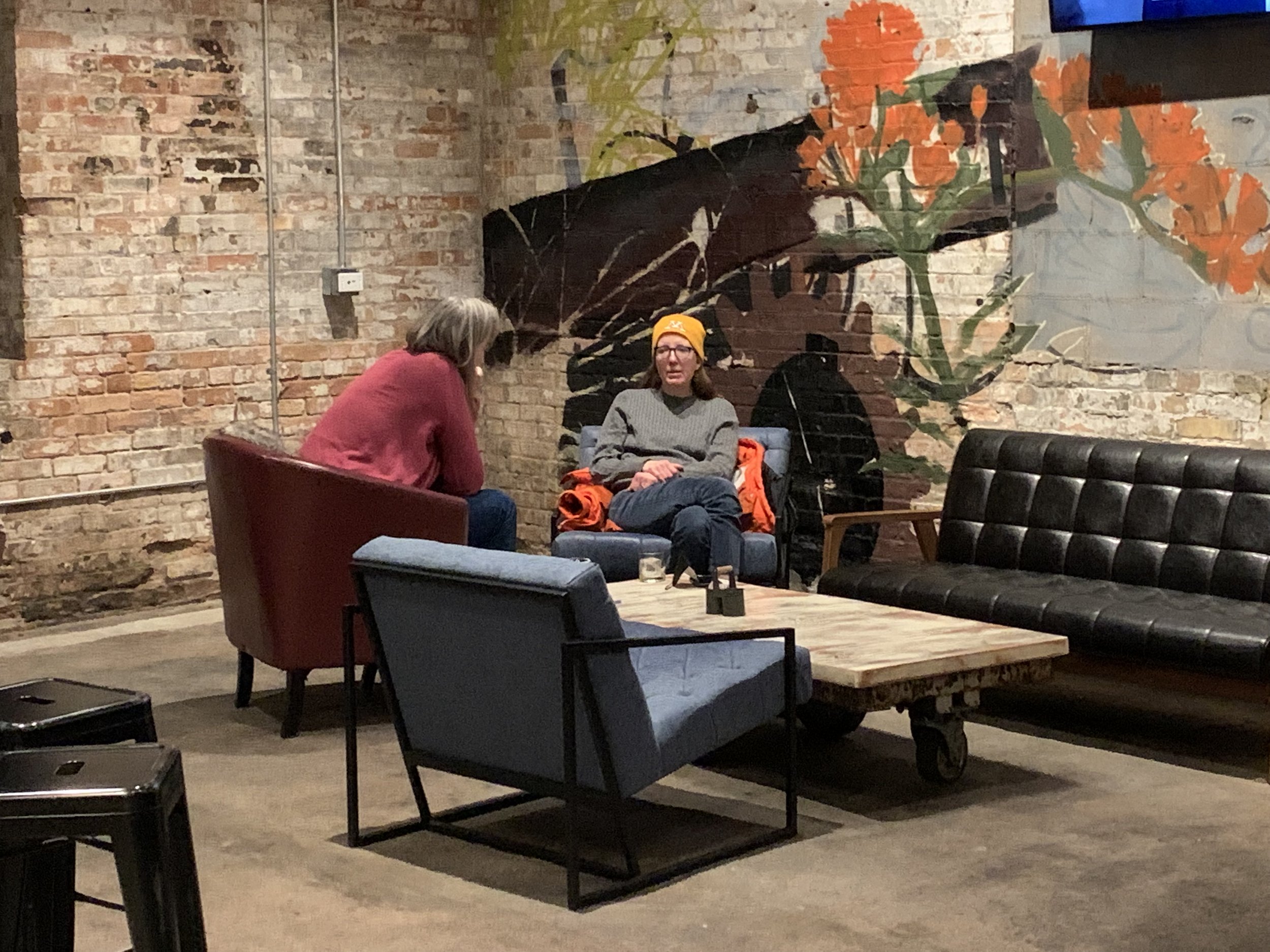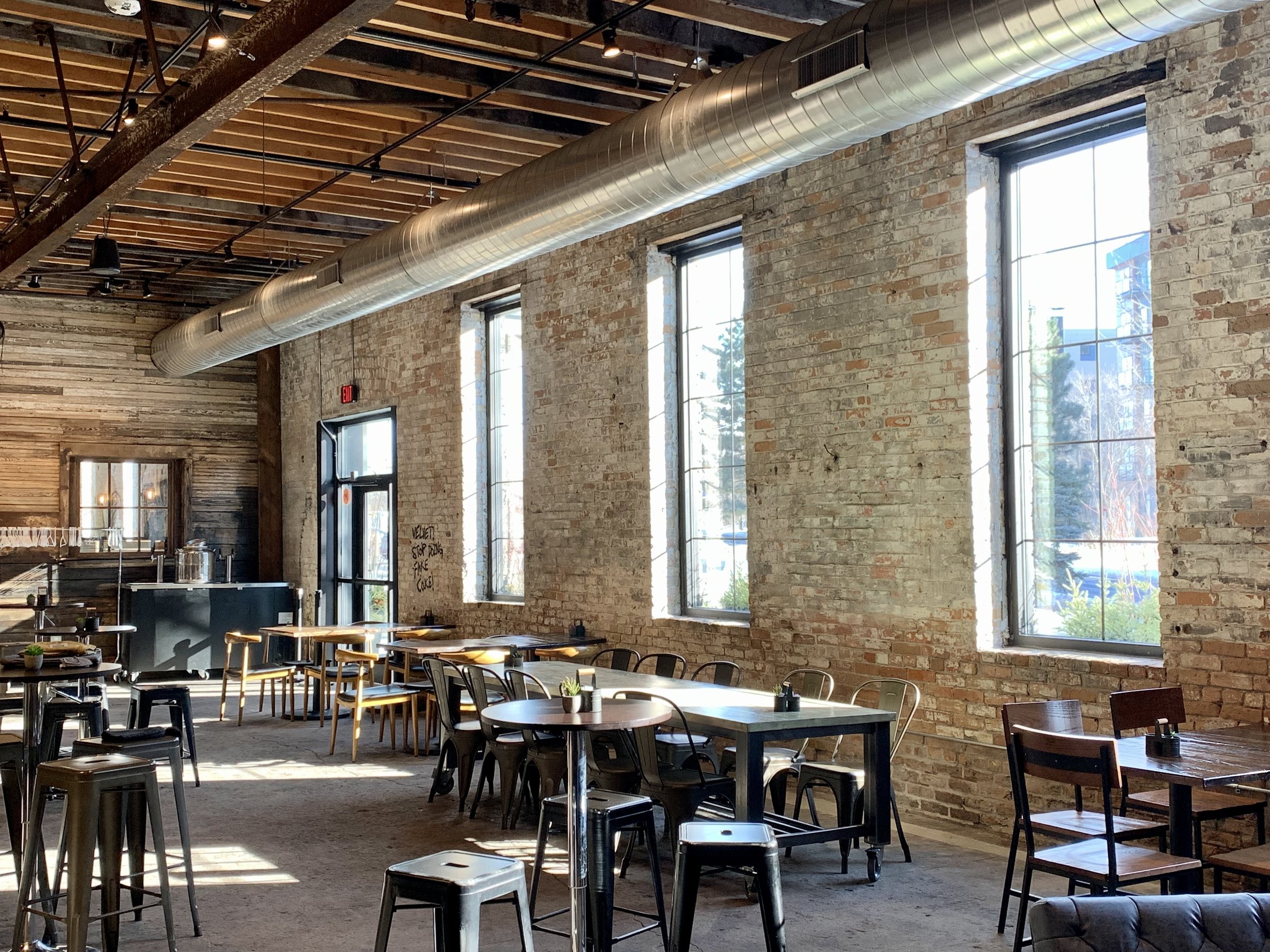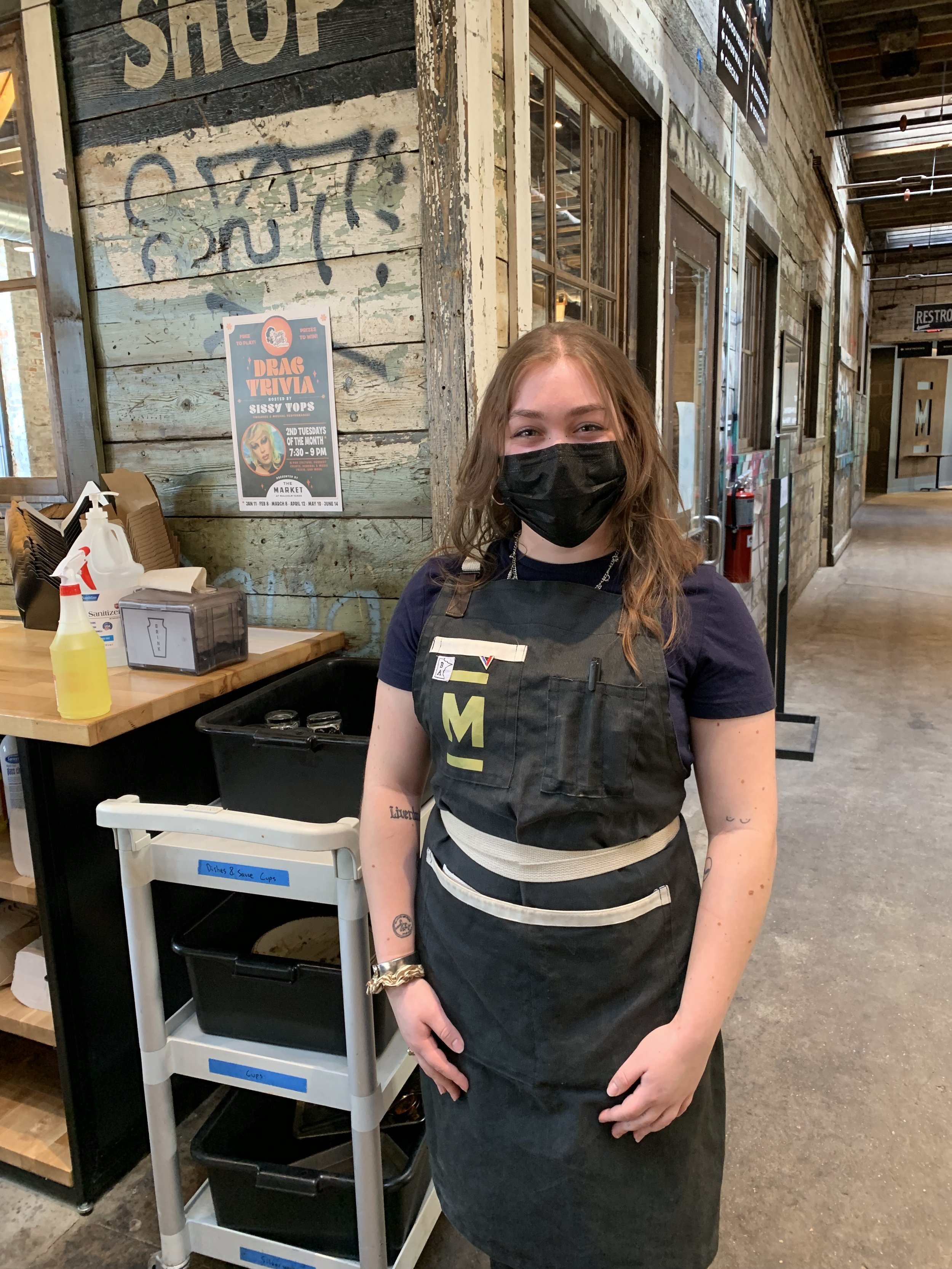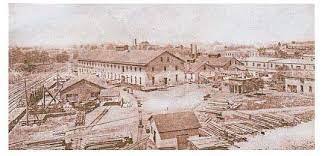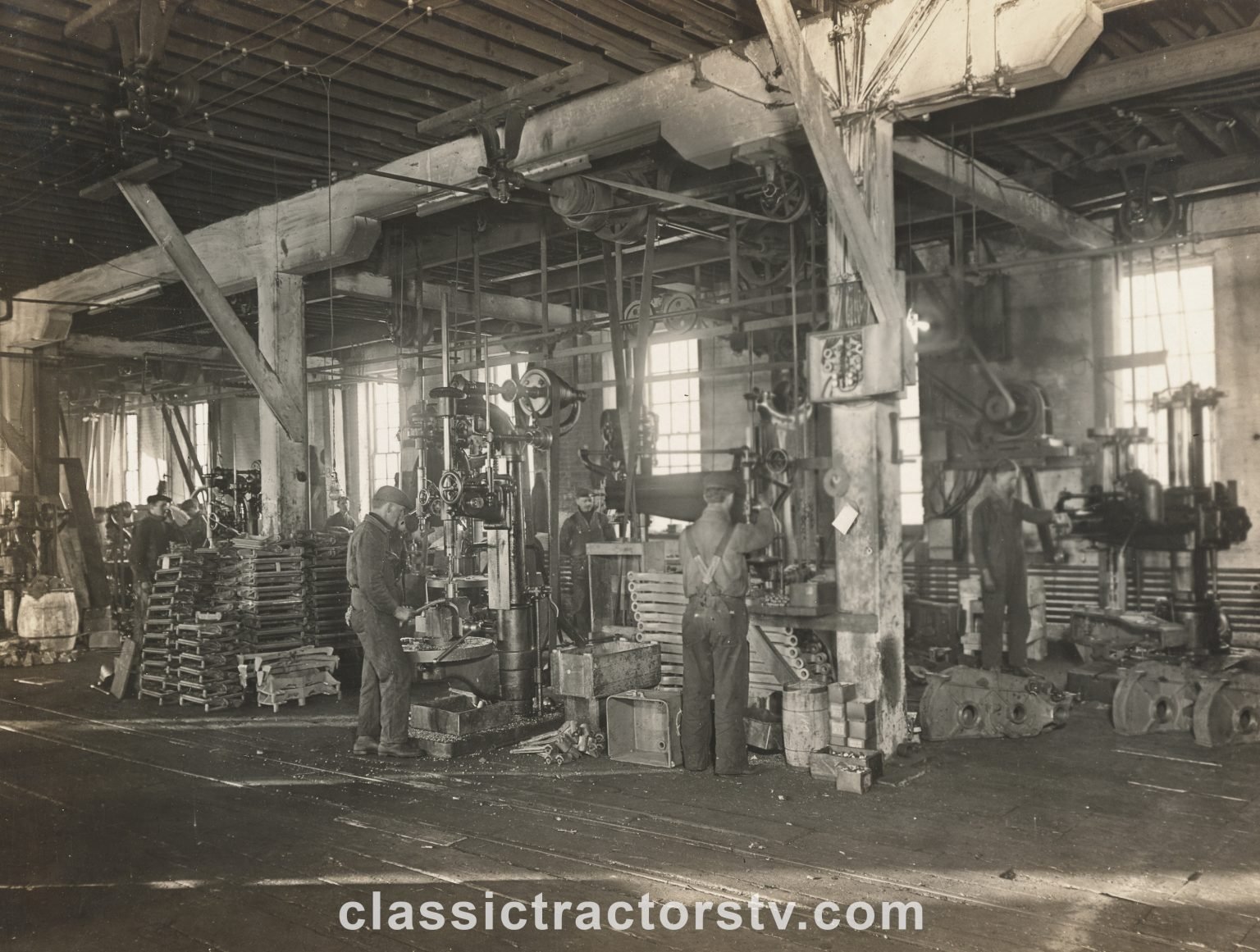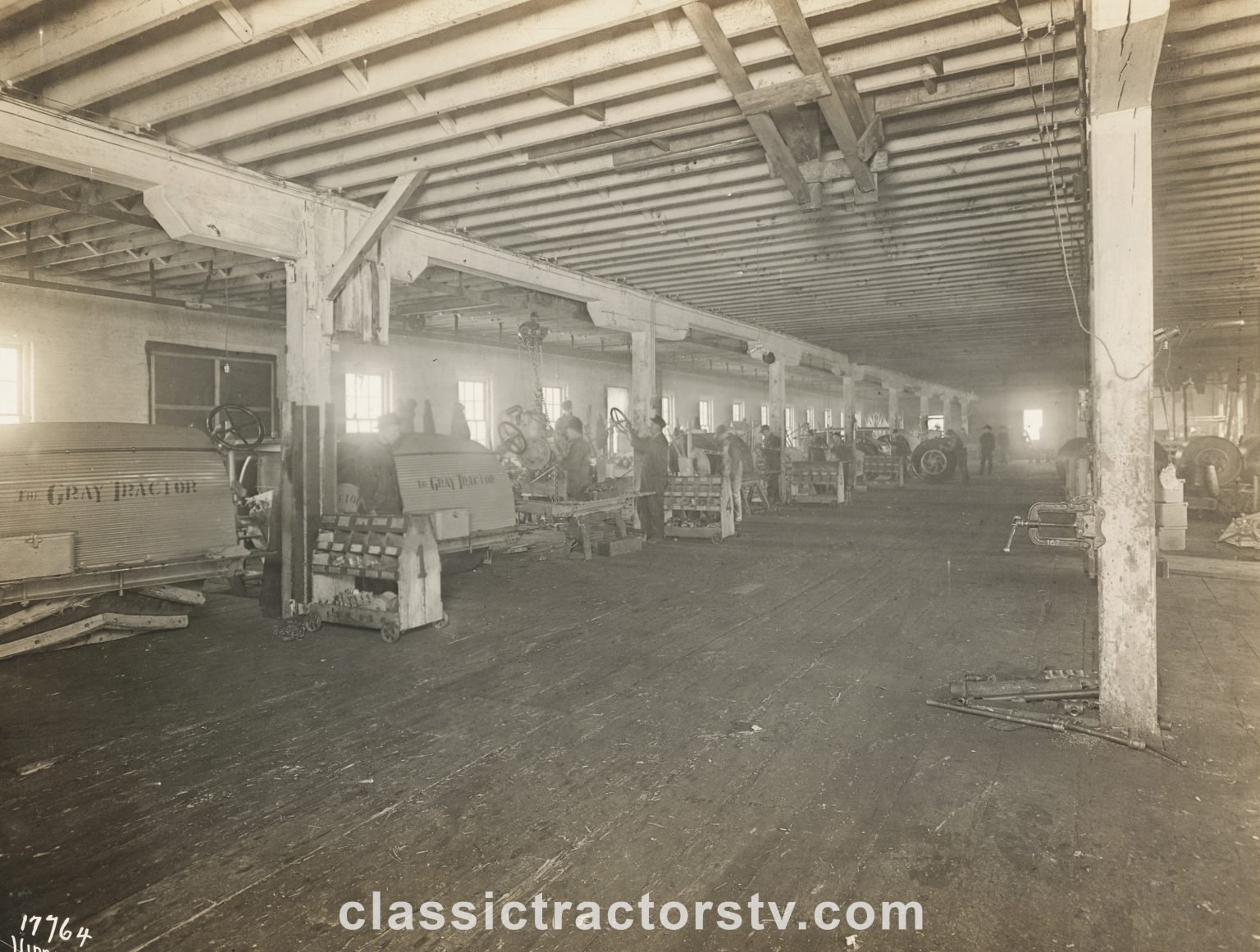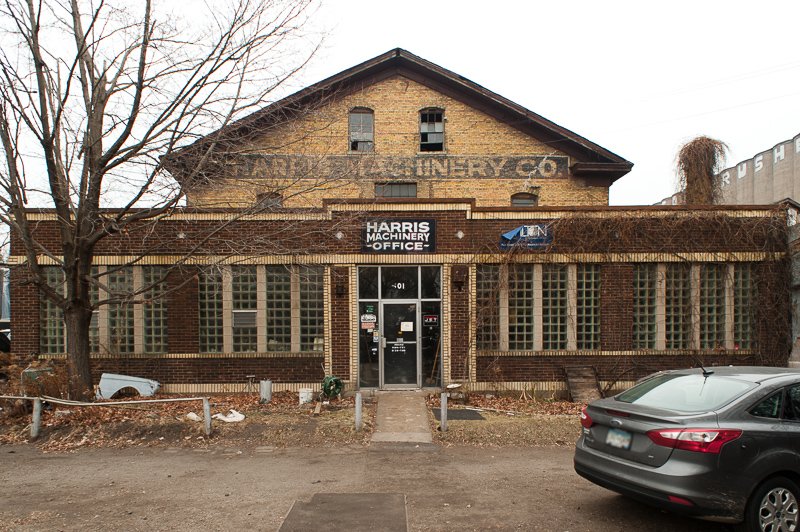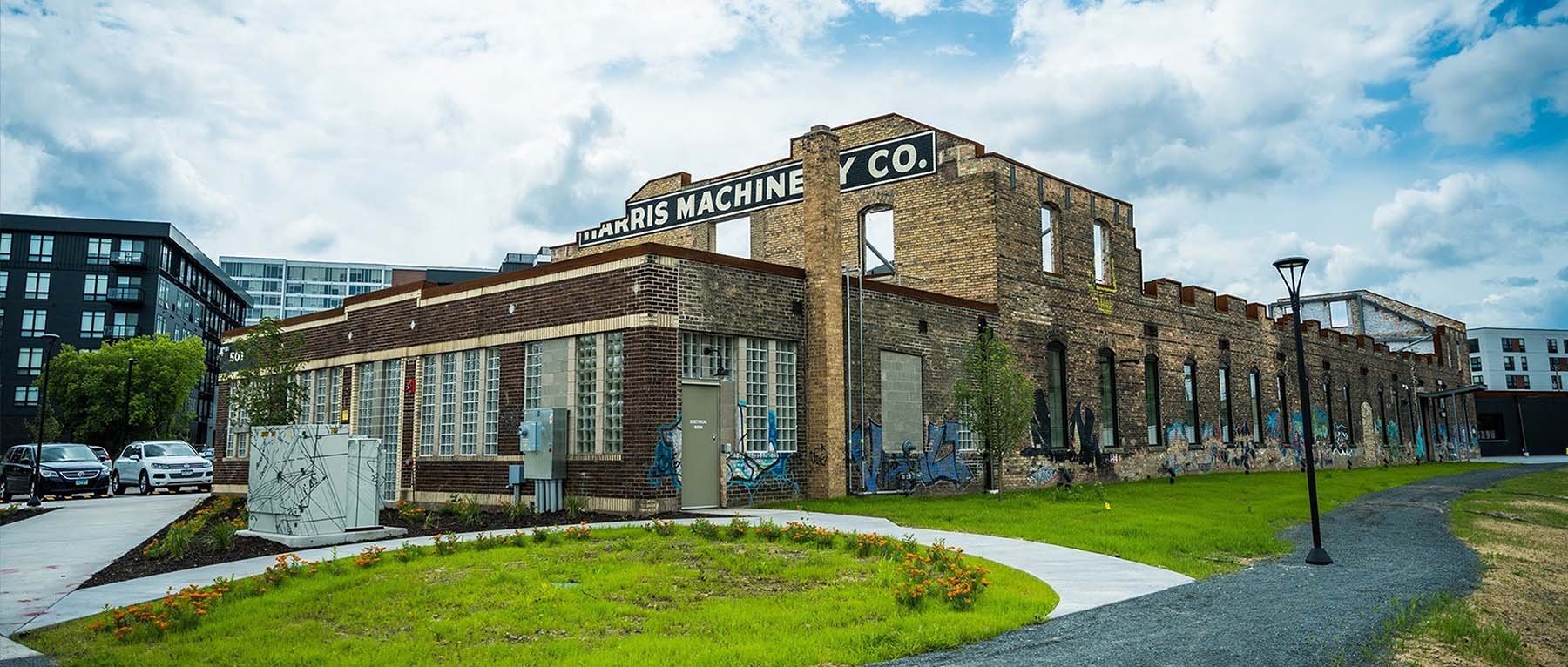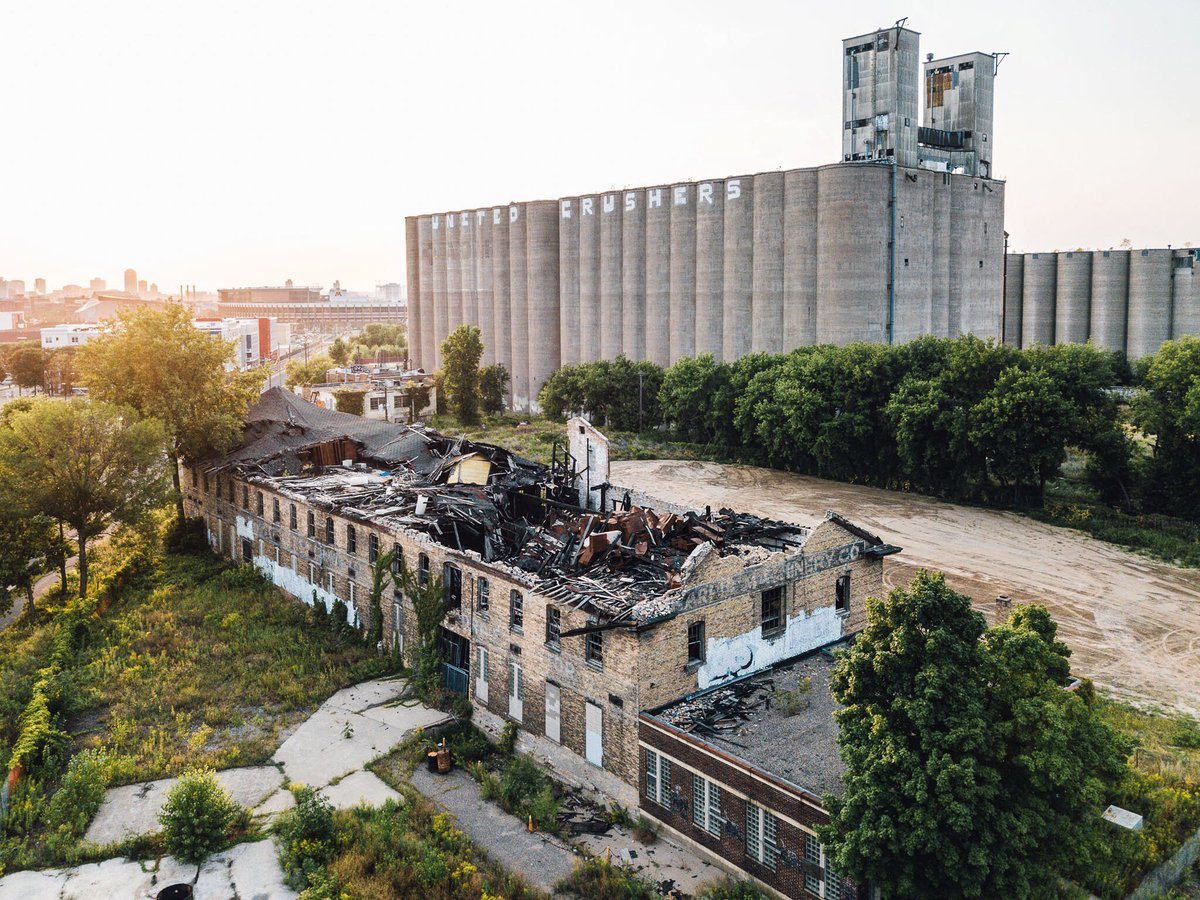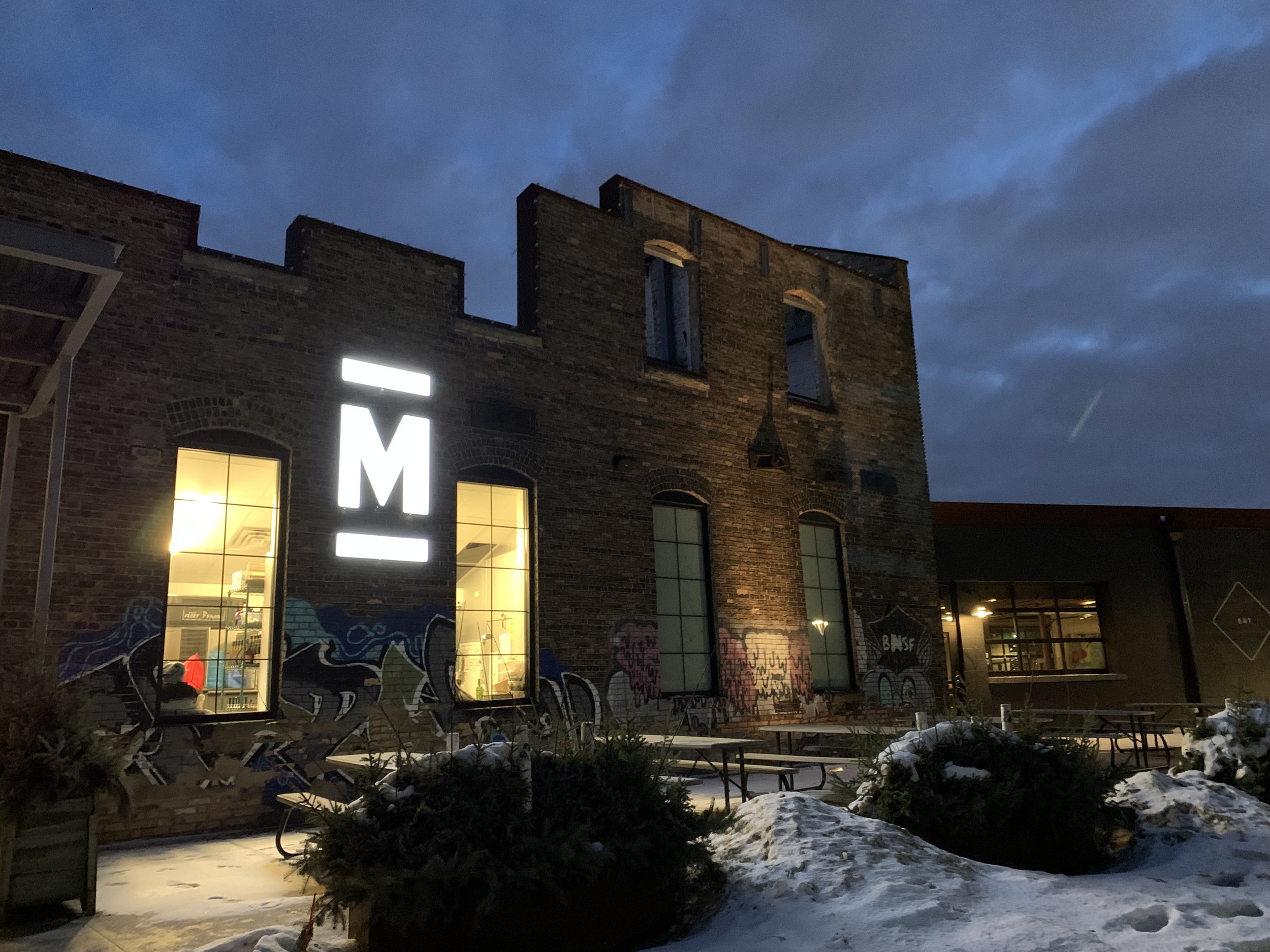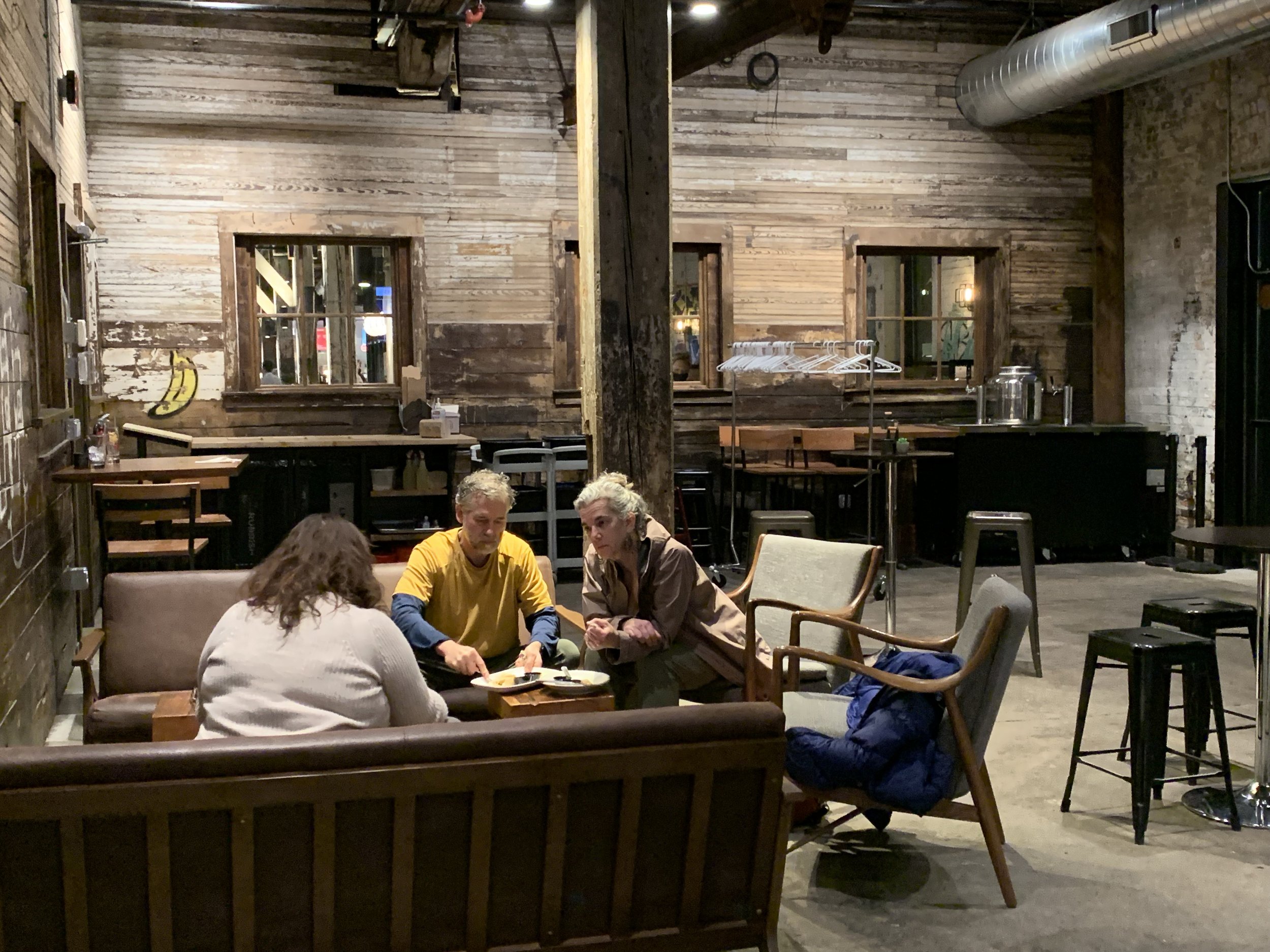Patricia Wall - One Tough Cookie
/Patricia Wall, owner and visionary behind The Market at Malcolm Yards
With degrees in journalism and culinary arts in hand, Patricia Wall thought she might make a career as a food writer. As the landowner and visionary behind The Market at Malcolm Yards – a lively new food hall in Minneapolis - Patricia is telling a story not in words but in servings of salteña, croque madame, and kimchi slaw.
For Patricia, food is communication and connection, two vitally important social needs, especially after almost two years of pandemic and social sequestering. While opening a food hall during Covid was not ideal (The Market to the public in July 2021), Patricia says The Market opened just when it was needed most. “People were going crazy at home. There was so much stress,” she notes. “The Market offers a ‘new view,’ a place this neighborhood, this city, needs.” Patricia points to the large, south-facing windows, and the skylights that punctuate the space with natural light, even on a dreary February day, and nods toward the many tables, couches, and bar stools (with distance between) just waiting for human habitation. Unwilling to undersell her clientele’s basic desires – even during a pandemic - Patricia declares: “Sometimes people just need a change of scenery.” And: “People still want to go out to eat.”
It’s early on a Wednesday, and the space shines in anticipation. When the lunch crowd arrives (wearing masks and flashing proof of vaccination), there are 9 independent chef-centered eateries to choose from, a bar with fancy cocktails, and a “pour wall” where customers can self-pour a pint from a selection of beers, cider, sparkling water, and wine. Where does a customer start? A non-conformist could start with ice cream. Then move on to Nepalese momos, Argentine empanadas, a vegan grain bowl, or deep-dish Detroit-style pizza with meatballs.
Patricia chose the inaugural food concepts strategically; she wanted emerging chefs who were hungry to offer something unusual, to hustle alongside her to develop a convenient, customer-centered experience that offered enough “familiarity and uniqueness” to draw customers not only from the surrounding Prospect Park and University of Minnesota neighborhoods, but from the suburbs, too. “I wanted to elevate the concept” of convenient and casual food, Patricia says. “No plastic forks, real glasses, a staff that clears the table when guests are finished eating.”
To satisfy cravings beyond food, Patricia has responsively and responsibly pivoted and provided more comfort and safety for visitors who are both weary from waves of restrictions and wary of virus permutations. Ventilation and outdoor spaces became critical features as Patricia and her design team modified the 1870-built brick building before welcoming guests. Garage doors were installed to bring the outdoors in (weather allowing) and patio spaces were expanded: “We are making a big deal of patios,” the always-sunny proprietor says, “and fire pits, heaters, and outdoor lighting.” People want to gather, Patricia confirms after watching customers closely these past 7 months, but they want to do so safely. “Our next additions? More fire pits for cold weather gathering. And more shade awnings for when things warm up. People just want to be outside.”
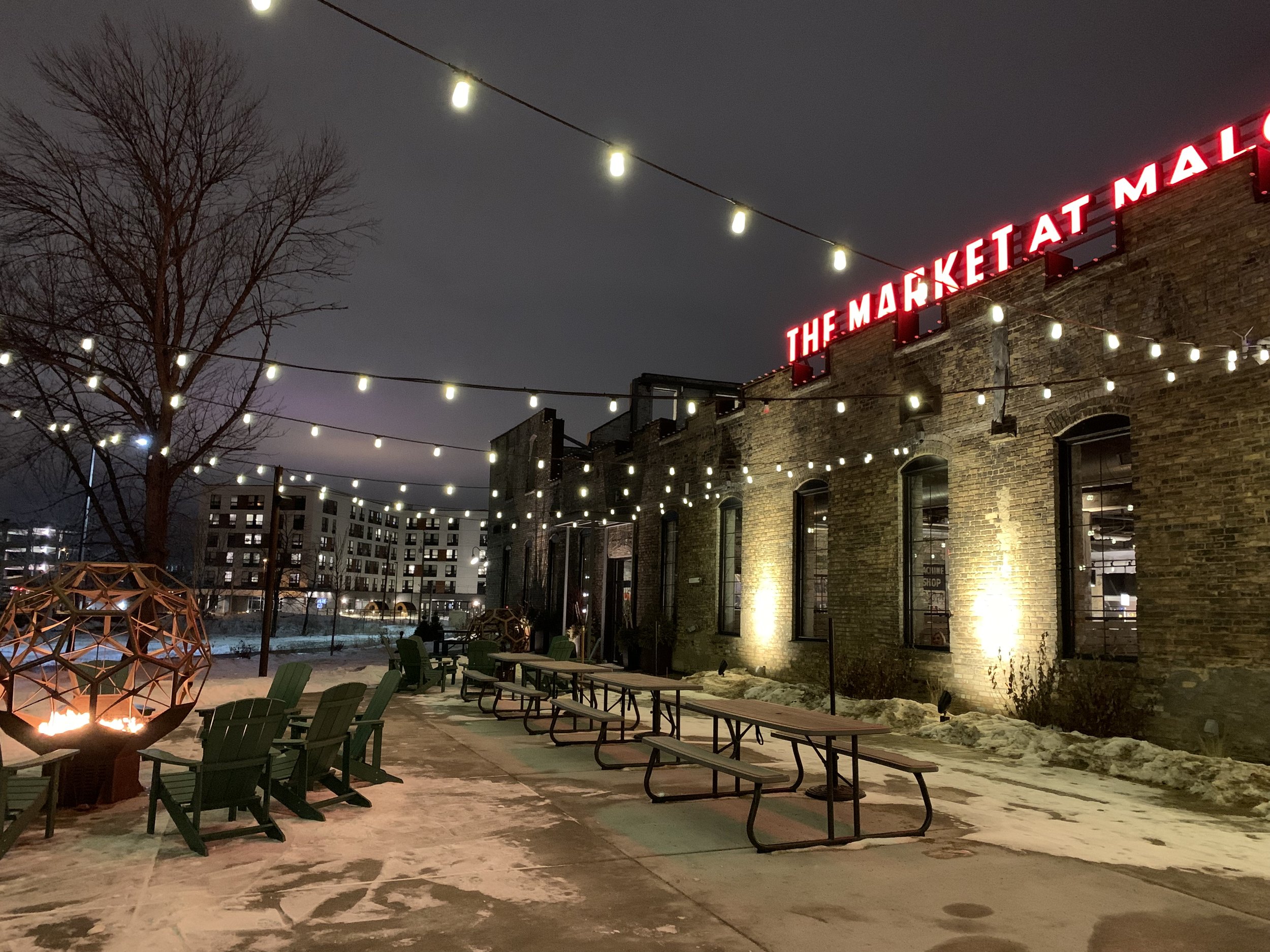
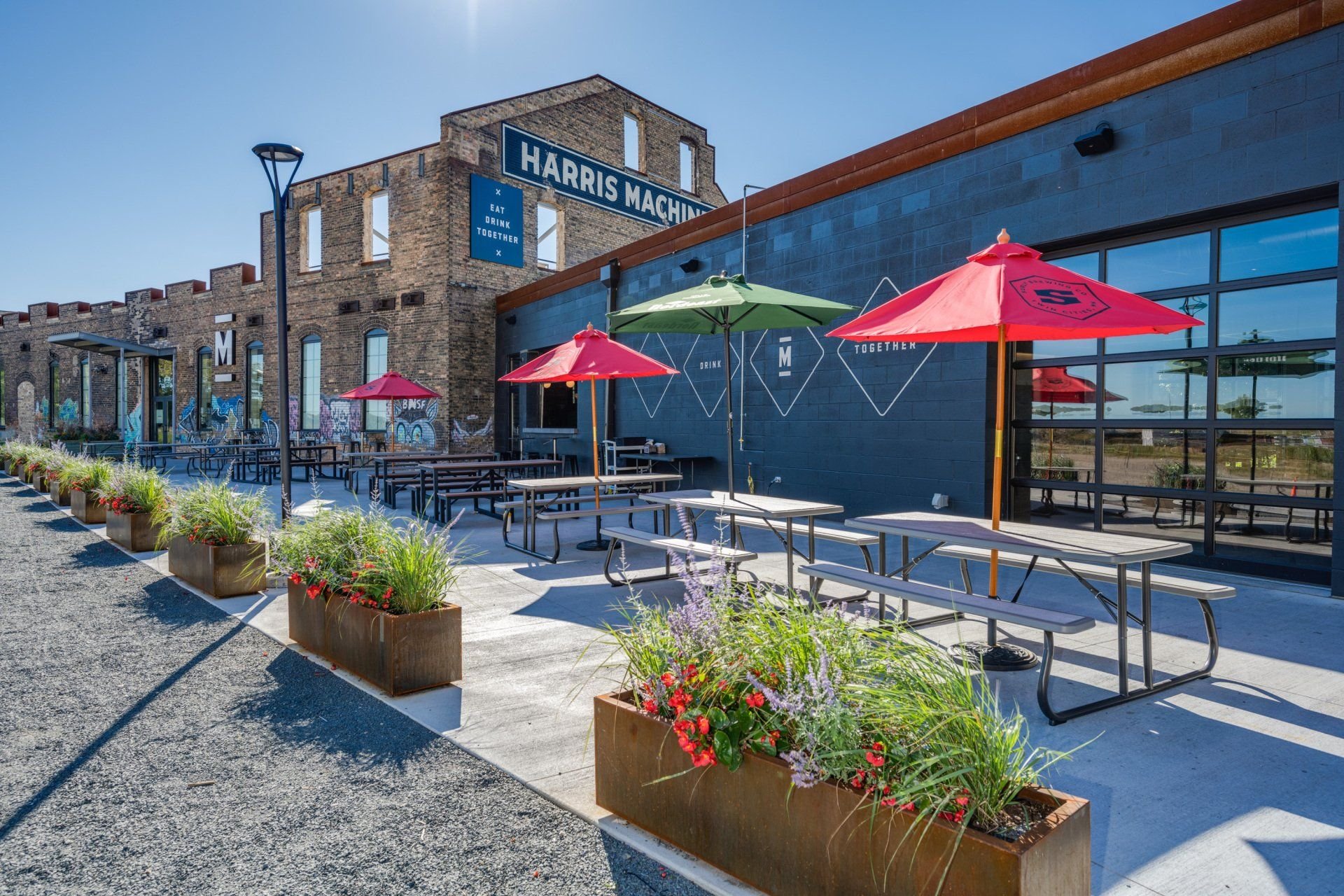
The Market’s location and the land surrounding Malcolm Yards is an interesting lesson in Minneapolis’ industrial past, and Patricia is hoping The Market offers a new iteration of commerce and community. The Market sits at the middle of the 27-acre Malcolm Yards site (owned by Patricia and her husband, John Wall of the Wall Companies) that is in various stages of re-development. It is adjacent to heavy rail lines (still heavily used) and lies at the feet of hulking, iconic grain silos (now silent). The exterior of The Market’s brick building reads “Harris Machinery Co.,” denoting the site’s past manufacture of rail cars and tractors. A sharp observer inside will find hold-over chains, pulleys, and metal rails for lifting and moving heavy equipment hanging from The Market’s rafters.
Patricia knew from the beginning she wanted to re-purpose the building and make it a gathering spot for community. She spent years visiting market halls in cities around the world, and wanted her market to speak to this place and to a Twin Cities clientele. “I loved the brick and timbers,” she says of the locally-sourced materials, and “the graffiti, too.” She hired a local artist to “spruce up” some of the PG-rated graffiti and left layers and layers of paint on some walls and posts. “I wanted to re-build the original roof line,” she concedes, alluding to a 2016 fire that gutted most of the second floor. A design consultant convinced Patricia that scars and architectural patina add interest, advising: “Let the building tell the story.”
The neighborhood surrounding The Market is developing at seemingly time-lapse speed. Malcolm Yards resides within the Prospect Park neighborhood, in Minneapolis, and is part of the larger Towerside Innovation District that also includes part of St. Paul’s St. Anthony Park neighborhood. Tucked beside the University of Minnesota Transitway, and conveniently close (via public transit) to both downtowns, the broader landscape now includes the Green Line light rail (conveying commuters, not cattle or dried corn), new pedestrian-forward green spaces, senior housing, childcare, hotels, and thousands of new units of student, market rate and work force housing. O’Shaughnessy Distilling has bubbled up to nearby Surly Brewing, each establishment an homage to Minnesota’s grain-laden (and thirsty) past. And plans are in the works for new bike lanes, public art, and “Smart City” improvements to the streetscape.
Patricia’s husband, John, initially wondered whether a food hall in a low-slung, dusty historic building would hold its own among the fast-paced, increasingly high tech, high-rise, and high-density residential and commercial spaces, and Patricia wisely counseled: “If you want to keep your buildings full, you need a place like [The Market] to anchor it, where people want to be with others, a neighborhood living room.”
Lunch rush at The Market, photo by Kevin Kramer
As a woman aware of narrative and what makes for a memorable meal, Patricia has confected the ingredients that draw people to a place. New York Placemaker William “Holly” Whyte is famous for observing, “What attracts people most, it would appear, is other people.” After almost two years of pandemic-sparked separation, Twin Citians seem grateful to be out and about, and happy to grab a beer or crispy chicken sandwich while doing it. The Market at Malcolm Yards is abuzz at lunchtime and happy hour, and is filled to capacity with people during curated events and on weekends. After these first few months of operation, Patricia and her team are scrambling to secure more high-top tables, more outdoor space, and more bike racks to accommodate everyone who wants to be (and be seen) in the deliciously Instagram-able space.
A few skeptics initially failed to grasp Patricia’s idea of turning a machine shed into a food hall: “My father-in-law, for one,” Patricia notes. He is one tough cookie. But so is Patricia, and their story, at least, has a happy ending: After a few meals at The Market with his daughter-in-law and their family (and hundreds of other hungry guests), “He seems to ‘get it’ now.”
Tuesday night at The Market, photo by Tracy Nordstrom
Resources:
The Market at Malcolm Yards: https://malcolmyards.market/
Malcolm Yards featured Prospect Park Neighborhood and Towerside Innovation District “This is Towerside” video: https://www.youtube.com/watch?v=uy1Toa5hIjE
Photograph of Patricia Wall and interior/exterior shots of The Market: Tracy Nordstrom (unless otherwise noted)
Historic Photos of Harris Manufacturing Co: Sanford Berman, https://www.sanfordberman.org/hist/harrw/harhist.pdf
Additional Historic Site Photos: The Market at Malcolm Yards



